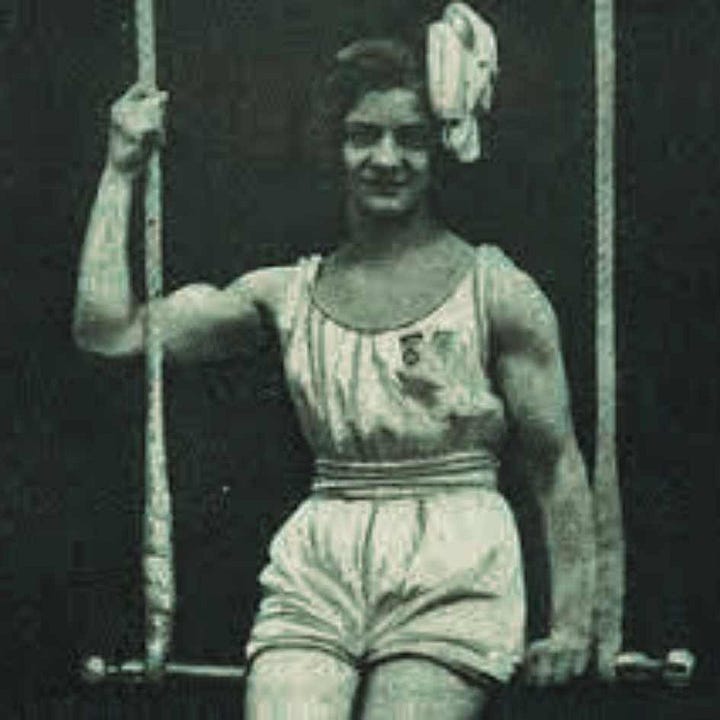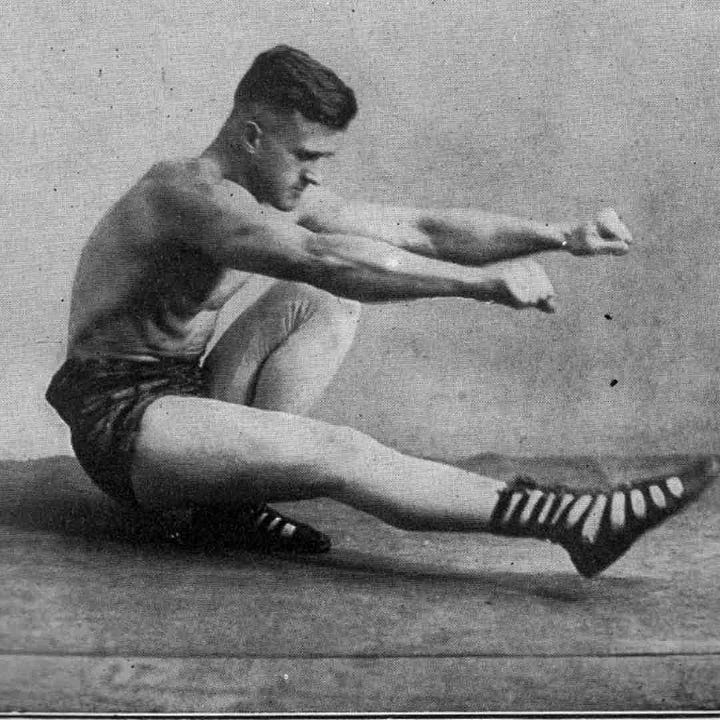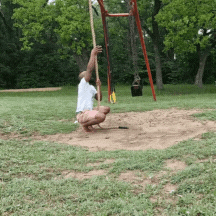Special note: I was deciding on what picture I was gonna use to represent the “White Picket Fence” society I thought I was coming back to in 2019, and landed on that one scene from Major Payne.
Someone - “What in tarnation did I just watch?”
This is part two of an old article I made a while back, but was gifted with more information from an alternative viewpoint that sent me down another rabbit hole of thought.
But pretty much in my last article, I covered some of the history of how dietary protein rose to such prominence, and the laboratory science at that time that was used to do this. The reason dietary protein is such a big subject for me is due to my experiences in life, as well as the history I’ve read.
In terms of my own life, I’ve experienced on multiple occasions how much better my adaptations to training can be based on the quality of the stimulus I provide in the workout instead of the nutrition I use during the recovery phase.
I only found this alternative stimulus for muscle adaptation through history, which my parents helped me to cultivate a love for from an early age. Before all these chemicals, supplements, resistance bands, weight machines, and more, men and women were training their bodies. They did this either by moving their bodies against the force of gravity in more difficult ways, exploring aspects of generating muscle tension, or lifting weights. I should note, dumbbells and barbells weren’t as easy to come by back then as they are today.




Then there’s the history of war, which I was fascinated with as a young lad and which I continued with both in military college and later in the Marine Corps…
But the months of running around Quantico with 70% of my weight on my back, my brief time in Syria, and hearing from the older Marines on how they had to ration their food for the initial invasion of Iraq gave me a better perspective on the history of warfare.
Random Note: I recall one of my Staff Sergeants talking about a dream where he was eating a burger from Burger King. They had to ration one Meal Ready to Eat (MRE) between two Marines for the entire day, he told me. I can eat three of these in a day, no problem( to provide y’all with some perspective). How the heck can something like this happen with all our warfare technology? Were we even trying?
These days, some aspects of warfare are easier on our bodies. We have vehicles and projectile weapons, so the only thing that is undergoing a great deal of exertion is our legs. Back then, it was both our legs and our arms, whether that be with carrying a shield or swinging a sword.
To draw an English longbow could take up to 150 pounds of draw strength. For a guy like me, who's proficient at pull-ups, a 60-pound bow with wheels and cables ain’t easy.
Marching hundreds of miles carrying heavy gear and fighting in close combat for up to hours at a time, how could armies…or the human body sustain itself so well?
Either the ways we’ve been taught to train and take care of the human body are missing the mark…or our environment, both chemically and electromagnetically, is creating such a strain on our bodies that they have become much weaker…
For this article, we’ll mainly focus on the former, how to train and take care of the body. Heck, it might already know how to take care of itself; we just need to get out of the way…
I received a gift the other week, and it’s one that’s led me to the research above. One that’s better helped me to make sense of the many things I’ve been reading as well as experiencing these past few weeks.
Instead of wasting energy, this, on the contrary, was retained. Which was fortunate for me, in more ways than one, when the position I was in is remembered. For I did not get too much to eat, I must tell you, and what I did get was not of the most nourishing nature. And so I continued for about three months, gradually recovering my lost development and adding appreciably to my depleted strength and energy.” (p 116 Alexander Zass, The Amazing Sampson)
With the Functional Isometric Contraction System, although the muscles may be worked to their limit for one supreme effort, they do not become tired. New growth in the cells and muscle tissues take place at once.” (p 5 Bobb Hoffman, Functional Isometric Contraction)
“Through this process, the entire attention flowed into the muscles active at the moment and the inner expectation of a strengthening resulted in an advantageous change of the physique” (p 8 Maxick, You Are As Strong As You Want To Be)
Many of these current and past situations of folks developing stronger and bigger bodies under some less than ideal situations are not only due to the proper stimulus for adaptation, but also because our bodies might be making the things that we need as long as they get some basic materials.
This website(“If Bacon Grew On Trees”) by Oliver Leslie is very interesting. The articles around nutrition make me giddy with excitement. I like how the author focuses on one important fact, the technology at the time that was used to make these discoveries…
“And again, with the masses, we layfolk, we non science folk – we of little to no science acumen – never consider the technology. Most never even know to consider the technology. The “tech” I speak of, primarily, would be instruments for viewing, for seeing. The seeing I am speaking of is chemicals, molecules, cells, compounds – seeing all of these things with the human eye by way of an instrument, a microscope say. In a lab, it’s all about seeing, seeing what molecules do, how they do, how they react to other molecules, to chemicals, if they react at all.” - If Bacon Grew On Trees, The Immune System
How much would the experiments in the 1830s by chemists like Gerardus Johannes Mulder and Jöns Jacob Berzelius have changed had they had the technology of our day?
How much would Wills' experiments on essential amino acids have changed had he had the technology of our day?
Science Bros - “Science is always evolving…”
….Which is true, however, we should go back and question the assumptions that a great deal of our current knowledge is built on. Without doing so, there’s the potential that we’re building something on an unstable foundation.
Day One Subscriber - “Jonathan, stop beating around the bush, we know you already believe that there’s instability.”
Me -
“Yeah, you’re right.”
Less than ideal technology coupled with an improper paradigm, one that sees the human body as being incapable of many things, is likely to create failed treatments for decades to come….
How much would experiments have been altered back in the day had they begun research from this starting point, which is that our bodies are highly advanced in their inner workings? Instead of something that came about through a blind process, and with this blind process as well as using our minds(bio-digital convergence), we can speed up the process and make it better…
What Oliver Leslie from IfBaconGrewOnTrees is getting at with the research that’s shared is that our bodies make many of the things we need from scratch. All they need are the right building blocks…
Oxygen
Minerals (magnesium, iron, zinc, etc)
Water
& Sugar (natural forms of it)
Yes sugar. There’s been a huge craze about sugar fasting in the past few weeks, which yall should look up. I always thought it was weird back in the day how some of the big-name carnivore personalities were getting ants in their pants about fruit(some of them later went back to fruit and honey).
But all these accounts in history I was seeing were men and women who were building up their bodies in harsher environments without the materials recommended by mainstream fitness today, started to make sense. Along with the proper stimulus for adaptation, our bodies make the elements we need. This has huge implications for certain industries…
Someone - But how do folks become deficient? Doesn’t modern medicine have tests to prove that people are deficient in things like protein?
What’s on that website, and what I agree with, is that most of our problems are multifactorial, meaning that many things in our lives and environment are causing it. Also, if we make our own proteins, the question becomes,
“What’s stopping our bodies from making it?”
Being the electrical body/voltage guy that I am, I would argue that our body is not getting the voltage to the right areas in order to kick off the process for synthesizing many of the elements from scratch. Which is why we must work out consistently.
With some of these tests that are designed to measure the protein in our blood, partially built on the assumption that dietary protein is crucial, it’s assumed that whatever is in our blood is going to be used. But what if it’s not? What if it’s an overabundance that’s eventually going to be washed out?
This is where Oliver Leslie emphasizes the importance of the growing science that is “Single Molecule Science.” That, instead of assuming that something is going somewhere by having looked at it in a petri dish(separated from a full living host), we look at it in real time(in vivo) using various methods. Something tells me engineered nanomaterials might be used for this, though, but that’s a subject for another day.
But back to these tests (assuming that what’s in the blood is going to be used) that measure protein in our blood, I wonder if there’s a way to train that will make the numbers on these tests improve without increasing dietary protein…
Lucklily I’m doing something now that I can test this theory out.
Keep reading with a 7-day free trial
Subscribe to Nerve & Muscle to keep reading this post and get 7 days of free access to the full post archives.



















